The Impact of Duct Takeoff on Airflow Distribution in HVAC Systems
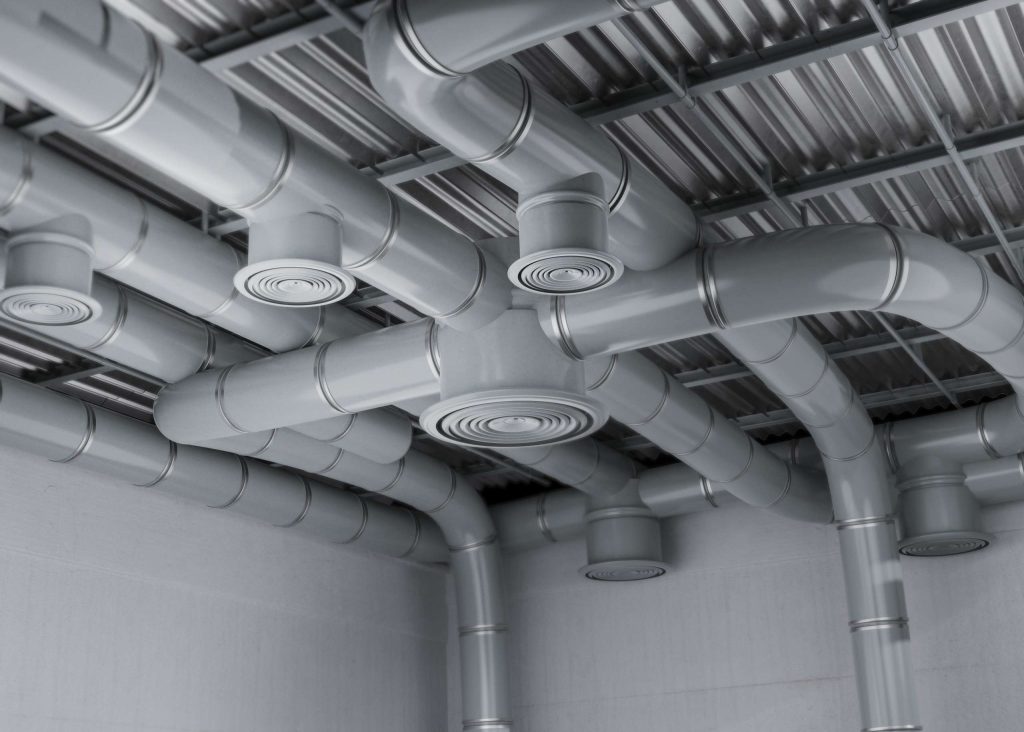

HVAC systems are vital for every residential, commercial, office, or home building. It ensures that the temperature of your premises will be balanced with the help of mechanical ventilation. For instance, it keeps your indoor space warm in winter and cool in summer. In an HVAC system, airflow distribution plays a vital role in the even distribution of conditioned air in the space. Proper airflow distribution ensures that every corner of your premises receives adequate airflow. That’s where duct takeoff is crucial to ensure the even distribution of airflow in the HVAC system. A properly designed duct takeoff ensures balanced airflow, preventing hot or cold spots and enhancing comfort. Duct takeoff services can be a wise decision to ensure efficient airflow in the HVAC system.
Diving into Duct Takeoffs
Duct takeoffs in HVAC systems are designated points where a secondary duct branches off from the central duct to supply air to specific areas. The primary purpose is to efficiently direct conditioned air, ensuring precise airflow distribution throughout the building. Duct takeoffs are vital in maintaining consistent temperatures and optimizing overall HVAC system performance by regulating air supply to various zones.
There are various types of duct takeoff configurations:
- Rectangular
- Spiral
- Angle
Factors That Can Influence the Airflow Distribution
Duct Design and Layout
Adequately sized and well-designed ductwork ensures smooth and efficient airflow. The layout must consider the distances and turns air must travel to reach various zones, impacting distribution.
Blockages
Any obstacles within the ductwork, such as debris, construction materials, or accumulated dust, can impede airflow, leading to uneven distribution.
Air Diffusers and Grilles
The selection and positioning of air diffusers and grilles are crucial in directing conditioned air into a space. Incorrectly placed diffusers can disrupt airflow patterns.
Balancing Dampers
Dampers are used to control the volume of air passing through a duct. Improperly adjusted or malfunctioning dampers can result in uneven airflow distribution, affecting temperature consistency.
Impact of Proper Duct Takeoff on Airflow Distribution
- Efficient Airflow Distribution
Well-designed duct takeoffs guarantee an even and effective flow of conditioned air throughout the structure. This reduces the possibility of hot or cold areas by ensuring constant airflow. An atmosphere where you can enjoy a steady and comfortable temperature is created by proper distribution, which improves total indoor comfort.
- Balanced Temperature Control
This helps maintain a balanced temperature across your premises. Maintaining a constant temperature throughout the facility is more accessible by efficiently allocating air to various zones. In addition to improving comfort, this balanced temperature management guarantees dependable and effective operation of the HVAC system.
- Energy Efficiency
The design of the duct takeoff is critical to energy efficiency. The HVAC system runs more efficiently and uses less energy when air is precisely directed where required. This results in lower energy costs and makes the operation more ecologically friendly and sustainable.
Benefits of Choosing Duct Takeoff Services
Accurate Measurement
Duct takeoff services ensure precise measurements of ductwork components, contributing to accurate project planning and execution. This accuracy helps in avoiding errors in material estimation and construction.
Cost Estimation
Takeoff services, spiral duct takeoff and rectangular duct takeoff, enable accurate measurements, aiding in precise cost estimation. This ensures realistic construction budgets, helping clients and contractors make informed financial decisions.
Customization
Service providers offer customized solutions tailored to the specific needs of a project, like rectangular duct takeoff. This level of customization ensures that the HVAC system is designed to meet the unique requirements of the building or structure.
Collaboration
Collaborative efforts between duct takeoff services and project stakeholders enhance communication. Clear understanding and cooperation contribute to the successful execution of HVAC projects, ensuring alignment with client expectations.
Time-Saving
Utilizing services accelerates the project timeline. With accurate measurements and streamlined processes, contractors can proceed with construction promptly, reducing overall project duration.
Accuracy
The precision offered by service providers minimizes the likelihood of errors in design and construction. This accuracy translates into a more efficient and effective HVAC system, meeting performance standards and client expectations.
Enhanced Productivity
Opting for takeoff services, like spiral duct takeoff, enhances productivity by providing detailed and organized documentation. This allows construction teams to work more efficiently, reducing the potential for rework and ensuring smooth project progression.
How Does Remote Estimation Ensure Accuracy in Duct Takeoff?
Remote Estimation is a trusted name in duct takeoff services and deals with various clients in residential, commercial, or other projects. We help our clients with accurate dimensions and quantities required in HVAC systems for efficient airflow distribution. We have employed a team of estimators to help you with the accurate cost in our detailed takeoff reports. Here are the features of our duct takeoff services that help ensure accuracy:
Expertise in Ductwork
We have an experienced team who specializes in ductwork and HVAC systems. Our team has a deep understanding of material and quantity, helping you with your specific duct takeoff.
Quick Turnaround
We understand the importance of accuracy in duct takeoff. That’s why we provide a quick turnaround time of 24-48 hours.
Cost-Effective
Our services, like rectangular duct takeoff and spiral duct takeoff, help contractors and subcontractors save money on material with our accuracy.
Advanced Technology
At Remote Estimation, we leverage cutting-edge software to provide error-free takeoffs.
The Strategic Role of BIM-Based Models in Precise Construction Cost Estimation
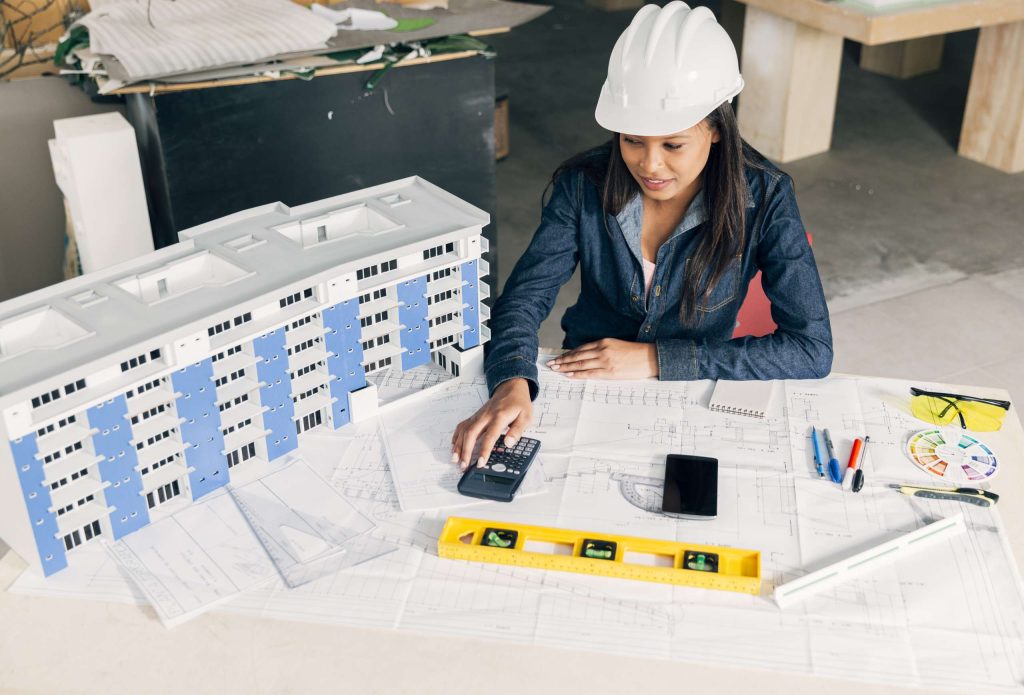

Building Information Modeling (BIM) is a transformative construction and infrastructure development approach. This revolutionizes how professionals plan, design, construct, and manage buildings and infrastructure. BIM involves creating intelligent 3D models that capture a project’s physical and functional characteristics. Traditional construction cost estimation methods often rely on manual processes, leading to potential errors and inefficiencies.
However, BIM estimators strategically integrate BIM-based models to enhance precision throughout the project lifecycle significantly. The 3D modeling capability provides a visual representation, fostering stakeholder collaboration and understanding. With 4D scheduling, BIM contributes to precise time-related cost estimation. The fifth dimension (5D) involves associating cost data with model components, facilitating real-time quantitative analysis for accurate decision-making.
Importance of Precise Construction Cost Estimation
Accurate construction cost estimation through BBIM significantly impacts project budgets, mitigating the risk of overruns and ensuring financial stability. BIM cost estimation allows you to anticipate expenses more accurately, allocate resources efficiently, and establish realistic budgetary expectations.
The BIM estimating process plays a vital role in construction projects by helping to inform decision-making. Its detailed insights empower you to make informed decisions throughout the project lifecycle. From design modifications to material selections, BIM estimation’s visual and data-driven nature enhances decision-making accuracy, aligning choices with project objectives, regulatory requirements, and budget constraints.
Furthermore, BIM is a powerful tool for attracting investment and securing funding. The precision and transparency of BIM cost estimation instill confidence in potential investors, reducing perceived financial risks. Accurate projections can help you secure more bids and gain the trust of your stakeholders to aid financial support.
Overview of Building Information Modeling (BIM)
Building Information Modeling (BIM) is a digital process of creating a 3D model enriched with data, fostering collaboration and data-driven decision-making.
Evolving from 2D drawings, BIM incorporates 3D models and additional dimensions (4D and 5D), gaining global adoption for its efficiency and collaboration benefits.
BIM’s core components include 3D modeling for visual representation, data integration for detailed information, and collaborative platforms enhancing communication among project stakeholders.
Integration of BIM in Construction Cost Estimation
3D Modeling for Visualization
BIM’s 3D modeling brings construction components to life, offering stakeholders a detailed and immersive visual representation of the project. This surpasses traditional drawings, providing a tangible understanding of the physical attributes.
The enhanced visual context fosters improved communication, ensuring a shared understanding among team members, clients, and investors. Stakeholders can engage with and comprehend project intricacies more effectively.
4D Scheduling for Time-Related Cost Estimation
BIM’s 4D scheduling integrates time as a dimension into construction models, enabling stakeholders to visualize project timelines and milestones. This innovative approach brings a temporal aspect to project planning and execution.
Through 4D scheduling, BIM allows for the simulation of construction processes and sequencing. Stakeholders gain insights into the project flow, aiding in efficient scheduling and preempting potential delays.
5D Cost Estimation for Quantitative Analysis
The 5D approach links cost data directly to BIM components, establishing a robust connection between design elements and budget considerations. Each component within the model corresponds to associated cost data.
The 5D approach enables real-time cost analysis and updates. As project details evolve, cost estimates adjust dynamically, ensuring stakeholders have access to the most current financial information. This responsiveness supports proactive decision-making throughout the construction lifecycle.
Advantages of Using BIM for Construction Cost Estimation
Precision and Accuracy
BIM ensures accurate and precise construction cost estimates. By leveraging detailed project data, BIM significantly reduces the likelihood of budget overruns and financial uncertainties. This fosters you towards a reliable foundation for informed decision-making.
Real-Time Updates and Adaptability
BIM facilitates real-time updates to project data, allowing immediate adjustments to cost estimates in response to design changes. This adaptability minimizes the risk of outdated projections and supports efficient change management. BIM estimators ensure that cost considerations remain aligned with project developments.
Enhanced Collaboration and Communication
BIM serves as a collaborative platform, improving communication among project stakeholders. This enhanced collaboration streamlines decision-making processes related to BIM cost estimation, promoting overall project efficiency. It allows the exchange of insights and perspectives related to cost considerations, promoting a more efficient and integrated approach to project management.
Optimized Resource Allocation
BIM provides a holistic view of the project, enabling informed resource allocation. From scheduling to material procurement, optimized resource management ensures cost-effective project execution.
Why Choose Remote Estimation for Bim Cost Estimation?
For a successful project, accuracy in cost estimation is vital, and BIM-based models empower you to achieve accuracy and precision in your estimation. We possess decades of experience in the industry and have experienced BIM estimators. We also help our clients understand the overall project workflow and reduce delays associated with the traditional method.
Remote Estimation also reduces the need for physical presence and allows you to send your project drawing from anywhere. You can submit the form using our website or email us. In our BIM cost estimation, we incorporate your time zone and postal zip code to enhance the accuracy of our estimation.Moreover, at Remote Estimation, we also help our clients to use their resources efficiently by efficient resource allocation. We offer BIM estimating services to our clients irrespective of their project size and requirements.
A Guide to Understanding Laminate Flooring Fitting Costs


Laminate flooring is one of the famous materials whose cost is the biggest concern. It mimics the wood and tile look based on your requirements and becomes the alternative for your flooring needs in your budget. Laminate flooring is usually made of durable, attractive, and cost-effective resin.
However, cost is vital for you, so it is pivotal to understand laminate flooring fitting costs before installing laminate flooring. Laminate flooring costs consist of materials, labor, and additional expenses. Being aware of these costs helps you with smooth and seamless installation. That’s where a flooring cost estimator helps you with accurate fitting costs by considering all the aspects of laminate flooring estimation. In this blog, we will delve deeper into the various aspects of flooring fitting costs.
Costs Associated with Laminate Flooring
Square Footage
The total area to be covered significantly for flooring fitting impacts costs. Larger spaces require more materials, time, and labor, increasing the cost per square foot. The laminate flooring fitting costs can vary based on the size and requirement of the project.
Professional vs. DIY
Opting for professional installation incurs additional labor costs. DIY projects may seem cost-effective due to no labor costs. However, a professional installer ensures proper fitting, reducing the risk of errors and potential long-term issues.
Grade
Laminate flooring comes in different grades, such as AC1 flooring, AC2 flooring, AC3 flooring, AC3 flooring, and others, indicating its quality and durability. Higher-grade laminates often cost more but offer enhanced resilience and aesthetics, providing long-term value.
Style and Pattern
Laminate flooring style and pattern can significantly influence costs. For instance, intricate designs or patterns in flooring style may have a higher price point than simpler, more standard options.
Cost Variations Based on Geographical Location
Regional differences affect material and laminate flooring fitting costs. Laminate flooring prices may vary based on local demand, availability of materials, and labor rates, making it essential to consider location-specific variations in budgeting. That’s why a floor tile estimator always includes a postal zip code in their estimation service to ensure accuracy.
Things That Can Affect Laminate Flooring Costs
Laminate Flooring Thickness
Usually, the thickness of laminate flooring tends to be more durable, so the thicker flooring material can cost more for commercial use. However, you can find various thicknesses of materials according to your budget to align your budget with an authentic feel.
Laminate Flooring Features
Some laminate flooring has special features, such as embossing, textured finishes, or advanced photographic prints, that can cost more. Some additional features, like waterproof laminate flooring, can also increase your project cost. These features may cost a lot, but they improve the visual aesthetic and provide unique functionality.
Installation Complexity
The complexity of the installation process can influence laminate flooring fitting costs. For example, intricate room layouts, patterns, or the need for subfloor adjustments can increase labor time and, consequently, installation expenses.
Additional laminate flooring fitting costs
Carpet Removal
Removing existing carpet before installing laminate flooring incurs an additional cost. This process involves labor, disposal fees, and potential subfloor preparation.
Installing New Skirting Boards
Upgrading or installing new skirting boards complements the laminate flooring and provides a finished look. The cost includes materials, labor, and any necessary painting or finishing.
Trimming doors
Trimming doors to accommodate the new laminate flooring height may be necessary. This involves labor costs and potential expenses for new door thresholds or adjustments.
Molding
You might need to add or replace molding in your room to ensure your flooring looks sharp. Additional molding enhances the aesthetic appeal and conceals gaps. However, adding or replacing molding requires material and installation costs.
Underlayment
Most laminate flooring does not come with underlayment, though a few laminates come with attached underlayment. However, they might require additional or upgraded underlayment, contributing to the extra cost, including underlayment cost.
Why Should You Hire a Laminate Flooring Cost Estimator?
Hiring a flooring cost estimator provides several advantages, like accurate fitting costs, detailed insight for successful project completion, and many more. Remote Estimation is a renowned estimator also employed as a floor tile estimator to help you with your laminate flooring costs.
We have been in this industry for over a decade and help you assess various cost factors to offer a detailed and accurate budget. We also provide a dedicated team for your large and long-term projects so you can save money and effort from having an in-house team.
We have employed professionals with several years of industry experience, ensuring a detailed and accurate budget. Moreover, we care for all projects, regardless of their complexity. Hiring us can help you save time and resources and avoid hidden costs.
Additionally, Remote Estimation helps you anticipate the flooring budget and allows you to create a proactive approach, minimizing unforeseen costs and challenges.
The Bottom Line!
Hiring a laminate flooring cost estimator ensures precise fitting costs, detailed insights, and a dedicated team for large projects. With over a decade of industry experience, Remote Estimation offers accurate budget assessments, saving time and resources. We also help avoid hidden costs and deliver successful projects. Moreover, we streamline the estimation process for a seamless laminate flooring experience.
Importance Of Drywall Professionals In Construction Projects


While drywall specialists play a vital role in shaping our buildings’ interior spaces, their contribution often remains unsung and unacknowledging by those outside their field of construction work. While most drywall cost estimator in this profession remain unknown, their contributions are integral in crafting that framework – from seamlessly installing and finishing drywall installations to shaping structural integrity and aesthetic appeal of construction projects. Let us investigate their role in shaping the structural integrity and aesthetic appeal of construction projects.
Craftsmanship of Drywall Professionals
Drywall professionals are:
Drywall estimating services in construction are master artisans, honing their craft over years of practice and dedication. Careful planning ensures each installation goes off without a hitch – guaranteed flawless execution of each installation for seamless performance that aligns precisely with intended designs. Their passion for perfection creates the basis of structurally sound yet visually appealing interior spaces.
Efficiency: Time and Cost Savings
Drywall experts who can efficiently accelerate installation and finishing processes are invaluable resources in any construction team. The drywall cost estimator skills not only shorten timelines but also save considerable costs due to employing cutting-edge installation techniques – optimizing both time and resources efficiently with this art form; their mastery speaks of their contribution towards practical building projects overall and reinforces their presence as integral members who deliver enhanced productivity that drives positive project outcomes and development initiatives forward.
Priority Safety Is No Subtractable Issue
Safety on any job site is paramount, and drywall professionals possess extensive knowledge regarding safe installation and finishing practices that ensure worker safety. Their knowledge provides a more secure working environment by decreasing risks related to accidents or injuries at job sites.
Valuable Expertise: Beyond Installation
Professional drywall estimating services serve as valuable advisors when selecting materials for every project and are adept at overcoming obstacles and troubleshooting challenges that may arise during execution. With experienced hands and sound advice, they ensure a seamless process from start to finish, ultimately elevating its outcome.
Drywall Cost Estimators
A reliable drywall cost estimator is invaluable to homeowners and contractors. By taking into account project size, type, local material costs and labour expenses as well as labour expenses incurred on site, this tool serves as a practical budgeting resource – but bear in mind that while estimators provide great insights, their final costs could still change due to unanticipated factors.
Precision of Drywall Takeoffs
Professional drywall takeoffs are conducted by experienced specialists using careful measurements and calculations to ascertain the amount of drywall necessary for any project. Drywall takeoffs are essential to ensure that a project will be successfully finished, so this step in the process should not be skipped. Estimators ensure the most efficient use of available resources by providing estimates that are as precise as possible, thus eliminating unnecessary costs or delays caused by lack of availability that might otherwise arise due to a shortage. They ensure this by accurately calculating estimates that provide the most optimal use of available resources – this ensures no unnecessary costs or delays caused by lack of availability will arise, including any costs or delays that a shortage might otherwise incur.
Utilizing Drywall Estimating Services Experience
Utilizing drywall estimating services offers homeowners and contractors an additional layer of accuracy and professionalism with comprehensive packages that include takeoffs, cost estimates, project timelines and project takeoffs – giving everyone peace of mind that their projects will likely stay on budget and schedule.
Drywall takeoffs involve quantifying the materials and labour required for a project, which can be intricate and time-consuming, especially with larger or more complicated endeavours. Wall estimating services possess the experience to accurately and efficiently complete takeoffs while considering all costs. Once complete, an estimator will create a comprehensive cost estimate, including materials, labour costs, equipment expenses, overhead expenses, and any relevant market factors or other relevant expenses, to ensure their estimates are as precise as possible.
Drywall professionals are unsung heroes of construction. Their skills go far beyond mere installation; instead, theirs is an art that marries precision with efficiency and safety to produce flawless installations. When embarking upon your construction journey, remember drywall estimating services play an invaluable role in shaping spaces to inspire us all and creating environments we call home for years.
Drywall Estimating Made Easy: Remote Estimation
Remote estimation has revolutionized how we approach drywall projects, providing a smooth, time-efficient, and precise method for gathering professional estimates. It gives homeowners and contractors an innovative solution to estimate drywall takeoff/drywall projects cost-effectively and with greater convenience – especially for those living in remote areas or having busy schedules. Furthermore, remote estimates boast significant speed advantages over traditional methods; estimators can avoid time-consuming on-site visits and measurement processes altogether.
We provide estimates as accurate as conventional approaches due to sophisticated software considering factors like project size, type, location, and chosen materials. Remote Estimation offers the ideal way for anyone involved with drywall work to secure professional drywall estimating service while streamlining the process and cutting associated costs and inconveniences.
Why Accurate Construction Takeoff Services Are Important
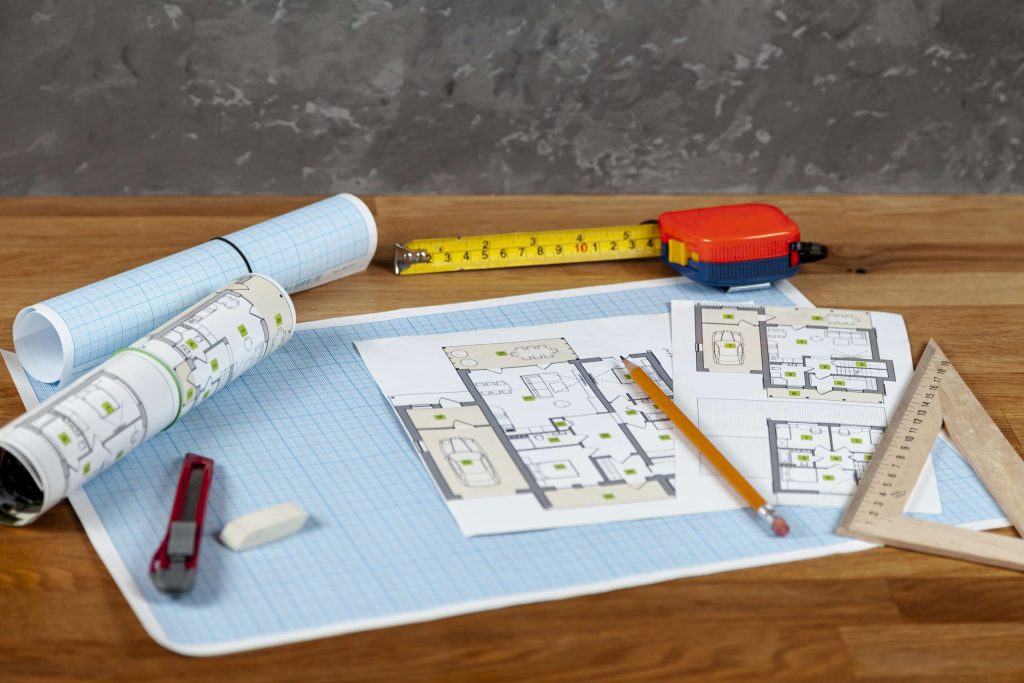

Accurate takeoff services form the cornerstone of every successful construction project, setting accurate cost estimation and resource allocation into motion. Every nail, brick, and beam in construction holds economic value – by conducting thorough takeoff services, we ensure details are noticed and reduce the margin for error in budgeting and planning processes, streamlining operations further while increasing overall project efficiency. This article explores why construction takeoff services are integral to this sector’s excellence-seeking.
Role of Takeoff Service in Construction Projects
Construction takeoff services utilize various methods to estimate material and input quantities needed in bidding, estimating, and buying processes. Takeoffs help contractors determine precisely the amount of materials they will require based on precise measurements, values, checklists, plans, cost prediction software tools such as bid optimization or cost prediction models to generate accurate takeoff estimates that provide clients and contractors with accurate material cost projections or bid optimization analysis results; accurate takeoff estimates allow clients and contractors to meet delivery timetables more easily while design errors may create inaccurate estimates due to starting with design documents as the starting point for project cost prediction or bid optimization processes.
The Value of Accurate Construction Takeoff Services
Quantity takeoff services are essential to the success of any construction project, helping estimate materials and labor needs to be completed on schedule and with maximum savings in costs and increased safety. Here, we will explore their many benefits, including savings on materials/labor costs, improved project management/administration capabilities, and time saved when taking off projects accurately.
Savings on expenses
Regarding businesses in the construction industry, one of the most significant advantages of accurate takeoff services is the possibility of cost savings on purchasing material. These cost savings are accomplished by cutting down or eliminating the expenses associated with overbuying and wasteful purchasing practices. With the assistance of accurate quantity takeoff services, construction companies can avoid unnecessary overspending on the materials necessary for their projects and instead order only what is genuinely required.
Improved Project management
Utilizing construction estimating services NYC has numerous advantages regarding project management, with accurate takeoffs assisting project managers in better budgeting and scheduling their projects, leading to fewer delays or reworks and increased efficiency due to cost savings.
Accident Prevention
Error-free and accurate construction takeoff can significantly improve site safety, with construction companies making sure all necessary safety equipment is available with more accurate materials lists. Furthermore, accurate takeoffs help identify potential risks that might help avoid accidents.
Precision in construction takeoff services is essential to the success of any building project, helping ensure its completion on schedule, within budget, and safely. Construction firms rely on accurate takeoff to complete projects successfully.
The Various Types of Construction Takeoff Services
Takeoff services are essential components of construction industry processes because they allow firms and projects to measure and quantify materials and labor required for projects. Two categories of construction takeoff services are used by construction firms – manual takeoff and digital. Manual services utilize physical tools, while digital takeoff utilizes specialized software; project requirements determine which service to utilize.
The Various Types of Takeoff Services:
Manual takeoff: This service entails measuring and quantifying the materials and labor needed for a construction project using physical tools such as rulers, calculators, and blueprints. This method takes time and is prone to human error.
Digital takeoff: This type of takeoff service involves measuring and quantifying the materials and labor needed for a construction project using specialized software. This method is more accurate, faster, and less prone to error.
Manual takeoff services are less efficient and more prone to errors when compared to digital takeoff services. At the same time, digital takeoff services are more accurate, faster, and less prone to errors. In the long run, digital takeoff services are more efficient and cost-effective. However, some companies and contractors continue using manual takeoff services for various reasons, including more access to technology or specific project requirements.
To summarize, both manual and digital takeoff services have benefits and drawbacks. Manual takeoff services may be more familiar and comfortable for some people. Digital takeoff services are more efficient and precise. Companies and contractors must consider their project requirements before deciding on the best takeoff method.
Get Accurate Takeoffs On Time and Budget with Remote Estimation
Remote Estimation offers accurate takeoff services to ensure projects run efficiently, including manual takeoffs, digital takeoffs, bid takeoffs, material takeoffs, and labor takeoffs. Furthermore, our tailored takeoff solutions can meet specific project needs.
Our experienced takeoff professionals use cutting-edge software and technologies to rapidly and precisely estimate materials and labor requirements for your project and deliver reliable yet cost-effective takeoff services on schedule and budget. Reach out to Remote Estimation now to discover more of our services and see how they can assist with starting your project on an ideal course.
5 Reasons to Use a Construction Estimating Service – Remote Estimation


Reliable cost estimates for construction projects are significant for industrial and residential projects. This is where construction cost estimating companies come in. Using these services, stakeholders can benefit from a framework that evaluates aspects of a project, providing them with essential data to make well-informed decisions. Construction estimating services help eliminate expenses and increase the number of projects that can be secured, enhance profit margins, and save valuable time. This article highlights five compelling reasons to consider such a service.
Reason 1: Optimizing Budget & Avoiding Cost Overruns
Construction estimation services play a role in optimizing budgets and preventing costs. These services are essential for project stakeholders to make decisions and allocate resources effectively. They help identify opportunities to reduce material waste, minimize labor expenses, and negotiate prices by providing cost estimates. Additionally, these services assist in creating budgets and optimizing project plans, ensuring that projects remain within budget constraints. Through their contribution to avoiding delays and implementing schedules, construction cost estimating companies facilitate the smooth execution of construction projects while preventing budget overruns.
Reason 2: Accurate Estimation for Construction
Residential and industrial construction estimating services are vital in providing estimates for construction projects. This is important because it enables you to:
- Establish a budget for your project.
- Identify cost overruns at various stages.
- Make informed decisions regarding project scope and material choices.
- Negotiate prices with contractors and suppliers.
Estimators utilize techniques to estimate construction costs, including:
- Unit Pricing: This method involves estimating the cost of each work unit, such as per foot or cubic yard.
- Assembly Estimating: This approach estimates the cost of each assembly or system within the project, such as the foundation, framing, and electrical system.
- Parametric Estimating: By leveraging data and statistical relationships, this method estimates the cost of projects.
By accounting for these factors and employing estimation techniques, construction cost estimating companies provide estimations that facilitate effective decision-making throughout the project lifecycle.
Reason 3: Resource Efficiency
Residential cost estimating services can help you improve your resource efficiency by enabling you to:
- Identify and eliminate waste
- Optimize your material usage
- Reduce your energy consumption
- Improve your labor productivity
Estimators can help you achieve these goals by developing and implementing cost-saving strategies. For example, an estimator may suggest using prefabricated materials or recycling construction waste. They may also recommend using more energy-efficient equipment or implementing efficient manufacturing principles.
Reason 4: Time-Saving & Avoiding Project Delays
Construction estimation services are valuable in saving time and preventing project delays. They offer advantages, including:
- Assisting in the development of a realistic project schedule.
- Identifying potential obstacles and delays at an early stage.
- Facilitating communication with all the team members.
- Managing changes to the project scope and budget efficiently.
Industrial construction estimating can also help develop an alternative plan for unexpected delays as it helps minimize the effects on both project schedules and budgets.
Reason 5: Compliance with Regulations
Industrial construction estimating services are valuable in ensuring that your project aligns with the building codes and regulations. This is crucial, as failure to comply can result in delays and penalties. When you collaborate with construction cost estimating companies, they will carefully assess your project plans to ensure they adhere to all regulations. Additionally, they will work alongside you to devise cost solutions that meet any obligations.
Here are some essential regulations that apply to construction projects in the United States:
- The Occupational Safety and Health Administration (OSHA) establishes and enforces safety standards for construction projects. These standards, found in Title 29 Part 1926 of the Code of Federal Regulations, cover aspects of construction safety such as fall protection, electrical safety, hazard communication, and more.
- Building codes at the state and federal levels establish design, construction, and occupancy standards. These codes address integrity, fire safety measures, accessibility requirements, and energy efficiency guidelines. Local building departments are responsible for enforcing these codes.
- Permitting and licensing ensure compliance with zoning regulations and environmental requirements for construction projects. The specific permits and licenses needed can vary depending on the type of project and location.
- Anti-indemnity statutes exist in states to prevent construction contracts from transferring liability for risks through indemnification clauses that could be unfair to contractors or subcontractors. These laws aim to protect these parties from risk.
- Many states have enacted payment acts establishing payment deadlines on construction projects. These laws ensure contractors, subcontractors, and suppliers receive compensation for their services and materials.
- Lien statutes ensure contractors and suppliers can secure payment by placing a lien on the project or property if they have not been paid for their services or materials. If workers are not compensated, these regulations enable them to place a claim on the property to retrieve their earnings.
These guidelines include ensuring safety, promoting competition, resolving payment conflicts, and adhering to building codes. All stakeholders involved in construction projects must comprehend and abide by these rules for safety and achieving outcomes.
Streamline Your Construction Projects with Accurate and Efficient Remote Estimation Services
Are you looking to streamline your construction projects and maximize profits? Look no further than Remote Estimation services. As one of the best construction cost estimating companies, we leverage advanced methods and resources to deliver precise and effective project estimates. Our expertise encompasses optimizing budgets, preventing cost overruns, improving resource efficiency, and ensuring project completion. With our services, you can confidently make well-informed decisions. Contact us today to learn more and take your construction projects to the next level!
How Much Does a Home Flooring Remodel Project Costs?
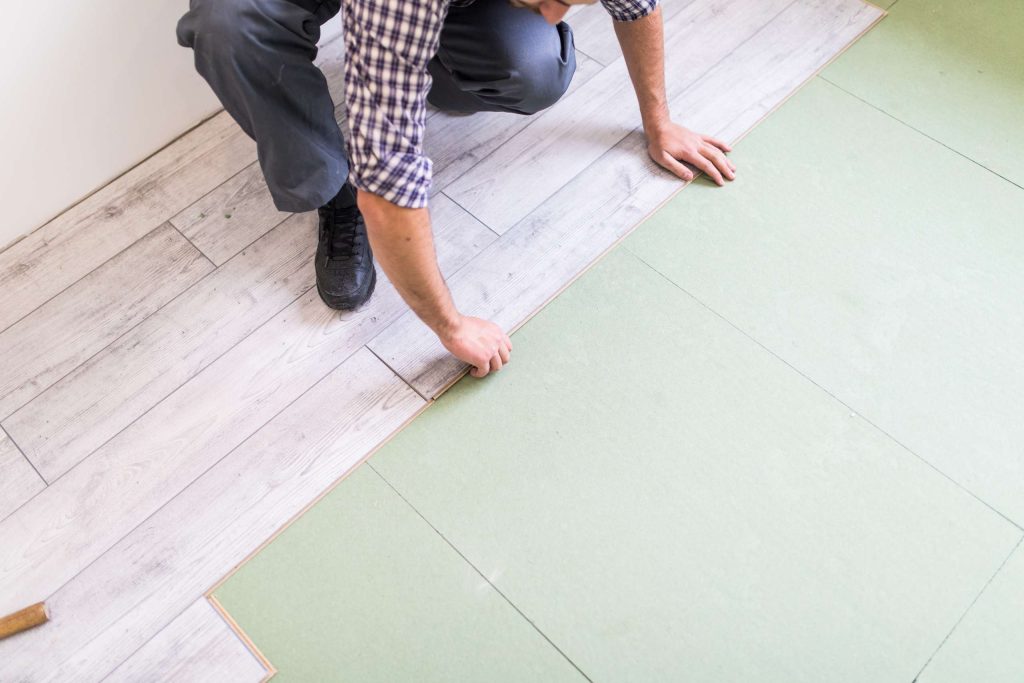

Remodeling your home can be challenging, especially when working under a tight budget; you may be thinking about repainting the walls, replacing the furniture, or replacing the hardware on storage cabinets. However, various things that can make a more significant impact without overrunning your budget are remodeling your house floors. There are different types of flooring solutions available, and you can also consider taking help from a reputed flooring replacement cost estimator, as they can provide a cost-effective solution and help you determine your requirements and install new flooring.
If you’ve been wondering how much floor remodeling would cost. In that case, this article will help you understand various factors that can impact your project and highlight different aspects you should consider for your home floor remodeling.
Factors that Impact Home Flooring Remodel Costs
Amount of Flooring Installation Work: The extent of renovation work required, like removing flooring or addressing water damage and structural issues, can raise installation costs.
House Type & Size: One of the significant factors that can affect the remodeling cost is the house type or size, as the renovation service is charged based on the project size and the material used for the project.
Sub-Flooring Type: The type of sub-flooring, such as concrete or wood, determines the options. Treating the subfloor for moisture materials like hardwood or concrete may lead to additional expenses.
Flooring Material: The choice of flooring material like vinyl, marble, ceramic, hardwood, tiles, or carpeting will have varying installation costs per foot. The location, special treatment, or customization can also impact the price.
Labor Costs: Hiring construction takeoff services for installing flooring is essential, contributing to the expense. The labor cost can increase depending on factors like the requirement of removing existing coverings and the project’s complexity.
Flooring Style: Choosing the type of flooring you want can impact the cost, especially if it’s a style everyone is after. It’s always a good idea to seek advice from the floor remodel cost estimator before making any decisions, as they can help you avoid mistakes.
By considering all these factors, homeowners can use flooring replacement cost estimators to understand the expenses associated with remodeling their floors. This way, they can make informed decisions that align with their constraints.
Types of Home Flooring Remodels
Here are various types of flooring solutions that can be used for home remodeling:
- Hardwood Flooring
- Laminate Flooring
- Vinyl Flooring
- Porcelain or Ceramic Tile Flooring
- Carpet
- Tiles
- Bamboo Flooring
- Linoleum Flooring
- Natural Stone Floors
- Cork Flooring
Whether you’re seeking elegance, durability, or affordability, a wide range of flooring options cater to every homeowner’s taste and requirements.
Cost-Saving Tips for Home Flooring Remodels
Here, we have highlighted some of the cost-effective tips for house floor remodeling:
- Evaluate different flooring options: Research and compare the prices of various materials such as hardwood, laminate, vinyl, or tile. Take into account both the cost and the long-term maintenance expenses.
- Opt for cost-effective materials: The floor remodel cost estimator lets you choose flooring materials that balance affordability and quality. For instance, laminate and vinyl flooring can replicate the appearance of options like hardwood or stone at a fraction of the cost.
- Consider Profesional Installation: Floor remodel cost estimators possess the skills and tools to contemplate installing the flooring professionally. This can help you save on expected expenses since DIY installation can be costly.
- Shop for the best deals: Compare prices from suppliers and retailers to find offers on flooring materials. Keep an eye out for sales, discounts, or clearance items to further minimize your expenditure.
- Utilize a floor remodel cost estimator: Take advantage of professionals as they can accurately estimate your remodeling project’s cost. Construction takeoff services will assist you in planning and budgeting accordingly while making sure you stay within your means.
- Opt for refinishing instead of replacement: Consider refinishing your existing hardwood floors and not replacing them if they are still in good condition but need a little sprucing up. Refinishing is usually a cost option compared to installing brand-new flooring.
- Plan for future durability: When selecting your flooring, it might be tempting to go for the option. However, it’s essential to think about the durability and maintenance requirements. Investing more in quality and long-lasting materials can save you money by reducing repair and replacement costs.
- Minimize waste: To avoid expenses, measure the area you plan to cover with flooring. By planning your layout, you can minimize waste. Make the most efficient use of materials.
Remember that these tips are meant as guidelines, as various potential cost-saving opportunities may vary depending on your project and location. It’s always a good idea to consult professionals and reliable flooring replacement cost estimators for pricing information.
Get Accurate Cost Estimates with Our Remote Estimation Services!
Remote Estimation can help you get accurate cost estimates quickly and easily if you’re planning a home flooring remodel. With our team of experts, you can get a quote without even leaving your home. Don’t waste time and money on assumptions – trust our reliable estimation and construction takeoff services to help you stay within your budget. Contact us today to get started!
How Much Does Drywall Installation Cost?
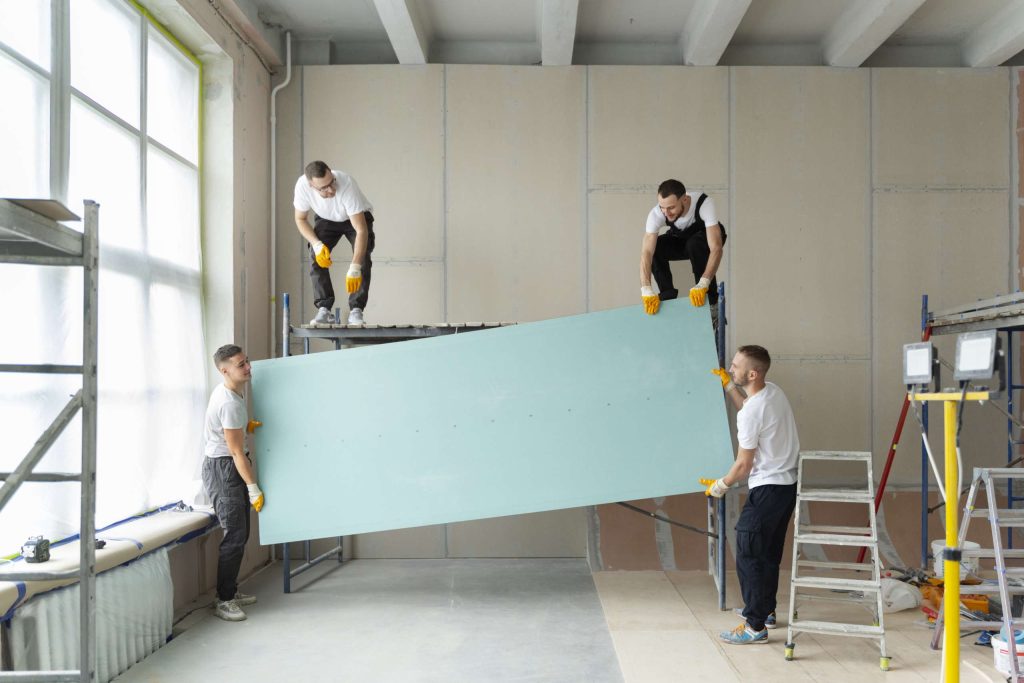

Installing drywall is a step in the construction or renovation process. It’s a cost-effective, versatile material with durable finishes for walls and ceilings. However, it’s essential to consider the associated costs when planning a drywall installation project. Factors like the type of drywall labour expenses and additional materials can impact the price. To get a sheetrock estimate of cost and expenses, it is recommended to consult with a specialized blueprint estimator who can provide detailed analysis based on your project requirements. This article will explore the factors that affect drywall installation costs and emphasize the importance of finding an estimator.
What is Drywall?
Drywall is a construction material used for creating walls and ceilings. It consists of gypsum plaster sandwiched between paper or fibreglass mats. Commonly known as wallboard, gypsum board or sheetrock, drywall is extensively used to finish homes and buildings’ walls. Additionally, it can be utilized to add design features like eaves and arches. Its popularity as a building material stems from its durability and ease of installation.
What Factors Affect Drywall Installation Costs?
When planning a drywall installation project, it’s essential to consider the factors that can influence the cost. Here are some of the most significant factors to keep in mind:
- Choice of drywall: Different types of drywall have properties and functions which can impact the cost. For instance, fire-resistant or soundproof drywall tends to be pricier than standard drywall.
- Project size and complexity: Larger projects require materials and a workforce, leading to costs. Moreover, projects that involve designs or special features may necessitate time and specialized expertise, thereby increasing the overall cost.
- Project location: The location can also affect the cost of drywall installation. Factors like labour rates, supply and demand dynamics and transportation expenses can all determine the price.
- Labor costs: The expense associated with labor can vary depending on the worker’s experience and qualifications as well as the complexity of the project. Estimate drywall labour costs for installation and obtain quotes from contractors to ensure a price.
- Additional material expenses: Apart from the actual cost of the drywall itself, there are several other materials required for proper installation, including screws, joint compound and tape. The cost of these materials can also impact the project cost.
When you consider these factors while planning a drywall installation project, you can be confident that you understand the expenses involved. It’s also beneficial to seek advice from specialized blueprint estimators who can provide you with a precise cost estimate for your project, enabling you to budget efficiently.
Types of Drywall
Drywall comes in several types, each with its unique properties. Some common types include standard, fire-resistant, moisture-resistant, soundproof, and lightweight drywall. Understanding the different types can help you choose the best option. Consulting with a specialized blueprint estimator can also provide valuable insights into which type of drywall is best suited for your project.
Factors to Consider When Finding a Specialized Blueprint Estimator for Drywall Installation
When selecting a blueprint estimator for drywall installation, there are factors to consider. These factors will assist you in finding an experienced estimator who can accurately assess the costs involved.
- Experience and Qualifications: The experience and qualifications of an estimator play a role in the selection process. It is essential to look for an estimator who has worked on projects and possesses the qualifications and certifications to estimate drywall labour costs accurately.
- Reputation and Reviews: The reputation and reviews of an estimator hold significance. Choosing an estimator who has received feedback from clients is advisable, as this indicates their reliability and the quality of their work.
- Fees: While cost should not be the determining factor, the fees charged by the estimator must be fair and reasonable. If an estimator offers prices compared to others, it may indicate their need for more experience or reliability.
- Effective Communication and Availability: When collaborating with an estimator, communication and availability are aspects. Opting for an estimator who responds promptly and is easy to communicate with will ensure project execution while keeping everyone on the page.
- Expertise: Lastly, consider the expertise of the blueprint estimator in drywall installation. Hiring someone well-versed in materials, methods, and best practices specific to drywall installation will prove beneficial.
Considering these factors, you can find a blueprint estimator specializing in drywall installation for your sheetrock estimate cost calculations and ensuring a comprehensive analysis of all associated expenses. This enables you to effectively manage your finances and complete your project within the set timeframe, ensuring it meets your expectations.
Remote Estimation: Convenient and Accurate Drywall Installation Cost Estimation
At Remote Estimation, we offer a convenient and efficient solution for estimating your drywall installation project’s overall cost. Our specialized blueprint estimators provide an accurate sheetrock estimate cost analysis based on your project’s unique requirements. Our service saves you time and money by avoiding the hassle of scheduling an on-site visit.
Contact us today to learn more about our remote estimation service and how we can assist you in achieving your project goals.
The preliminaries in construction contracts and what they should include


When it comes to construction projects, every construction business uses written contracts; the process begins with a meeting between the contractors and the client to decide the degree of planning the requirements for the project. The preliminary construction contract is an initial stage where they agree. It is also essential as it helps the stakeholders resolve disputes and focus on the project’s details, bill of quantities, contract administration, and more. This article highlights critical aspects of preliminary in construction contracts and what are the prelims included in the arrangements.
What are Preliminaries in Construction Contracts?
Construction contracts are agreements between commercial or residential contractors and clients based on the client’s requirements for their construction projects. A firm contract should be able to outline various aspects of construction, such as the project’s scope, in a much more detailed form, as it leaves no room for error or confusion for both parties.
Preliminaries play a vital role in construction projects because they ensure that all essential aspects required for project completion are considered. A preliminary estimate in civil engineering provides an understanding of the expenses and resources needed apart from the actual construction work. This facilitates improved project planning, budgeting, and risk management. When preliminaries are included in the contract, the client and contractor gain an overview of the project requirements, minimizing any chances of disputes or misunderstandings.
Types of Construction Contracts
Here are some of the common types of construction contracts:
- Lump sum contracts: Fixed price contracts, or lump sum contracts, involve an agreement between the commercial or residential contractors and the client regarding a predetermined price for completing a project. The client pays the contractor in fixed installments, while the contractor bears any additional expenses. This type of contract is most suitable for projects with a defined scope and a comprehensive understanding of project costs.
- Time and materials contracts (T&M): These preliminary in construction contracts are based on the resources utilized during the project. The contractor can charge their clients for the time spent on the project site and the materials consumed. This type of contract is more appropriate when dealing with projects with scope and uncertainties regarding project costs.
- Unit price contracts: These are based on the price per unit of an item or service. The contractor gets paid according to the quantity of work completed at the agreed-upon unit price. This type of contract is suitable when the project’s scope is clearly defined and a specific amount of work is required.
- Guaranteed maximum price contracts (GMP): It is similar to time and materials contracts but with a price limit. The commercial or residential contractors are responsible for the completion of the project within a limited period, and they cover any additional costs. GMP contracts work well for projects that have uncertainties regarding project costs.
- Cost-plus contracts: In these contracts, the payments are made based on the project’s cost, including additional fees for the contractor’s services. The contractor bears all project costs, including materials, labor, and overheads, receiving compensation for their services accordingly. Cost-plus contracts are suitable when there is uncertainty involved in estimating project costs.
Each contract has pros and cons; however, each preliminary estimate in civil engineering provides a solution that reduces errors or confusion between the client and contractors. It also ensures they agree on analyzing various aspects and the project’s scope.
Elements Included in Preliminaries
Bill of Quantities
This document provides a breakdown of the quantities and costs involved in materials, labor, and equipment needed for the project.
Contract Administration
It ensures the overseeing and monitoring of preliminary estimates in civil engineering and the performance progress and adherence to obligations.
Site Investigation and Surveys
It is the process of evaluating the site’s characteristics, such as soil composition, geology, and topography, to ensure the feasibility of construction.
Project Planning and Management
Defining project goals, developing a plan, and effectively overseeing project execution.
Health and Safety Plan
It is a process of documentation outlining the safety measures and emergency procedures to ensure the safety of workers and the people in the surrounding areas during construction activities.
Insurance and Compliance
It ensures that all legal compliance and requirements are met by obtaining insurance coverage for the project.
Dispute Resolution
It ensures the resolution of conflicts between clients and contractors that may arise during construction to ensure completion according to plan.
Effortlessly Manage Your Construction Estimates with Remote Estimation
We take great pride in offering this solution to streamline the estimation process. Remote Estimation services are specifically designed to assist construction experts in generating and overseeing estimates from any location at any given time. By incorporating preliminary estimates in civil engineering, Remote Estimation ensures enhanced precision when estimating project expenses—an indispensable aspect of maintaining a well-balanced budget. Our meticulously designed service not only saves you valuable time but also allows you to concentrate on other crucial elements of your project. Construction professionals have found Remote Estimation to be an asset. Try Remote Estimation today and see the difference for yourself.
5 Easy Steps to Get an Accurate Steel Detailing Estimation
The construction industry is very competitive, and the importance of precision cannot be overstated. Steel is crucial in construction, so being precise isn’t just a nice to have; it’s a must. An accurate steel building cost estimate forms the backbone of successful project execution. This aids in effective budgeting and resource allocation.
Moreover, precision in estimation becomes the cornerstone of efficiency in execution, ensuring the success of your construction endeavors. In this blog, we will delve deeper into the five essential steps to achieve accuracy in structural steel estimating, ensuring not only meticulous planning but also the flawless execution of projects.
Comprehensive Project Understanding
Project Overview
Before diving into the intricacies of steel detailing, gaining a comprehensive understanding of the entire project is crucial. This involves a meticulous review of architectural plans, structural drawings, and any additional specifications provided. Remote Estimation immerses itself in the project’s intricacies to understand the groundwork for a more accurate estimation process.
Scope and Requirements
Identifying the scope of the project and its specific requirements is a vital aspect of the initial step. This involves grasping the intended purpose of the structure, any unique design elements, and the project’s overall vision. A solid foundation in project understanding sets the stage for precise steel detailing estimations.
Breakdown of Structural Components
Identification and Quantification
Once armed with a comprehensive project overview, the focus shifts to breaking down the structure into its individual components. This involves figuring out and counting things like beams, columns, trusses, and other building parts. Advanced software tools play a pivotal role in this stage, offering accuracy and efficiency in the quantification process.
Visualization and Streamlining
Utilizing advanced software provides a visual representation of the structural elements, aiding in a more intuitive breakdown. This step is super important because it helps make the counting process smoother. It ensures that every part is included, making the estimate more accurate.
Material Specification and Selection
Materials as Building Blocks
Materials are the building blocks of any construction project, and selecting the right ones is critical to accurate steel detailing estimations. Professionals must consider factors such as the type of steel, its grade, finish, and any special coatings or treatments required based on the environmental conditions the structure will face.
Balancing Performance and Cost
While aiming for high-performance materials is essential, there is a delicate balance between performance and cost. Achieving this balance ensures accurate estimations and the final structure’s optimal performance and longevity.
Utilize Advanced Estimation Software
Empowering with Technology
Technological advancements shape the modern construction landscape, and embracing these innovations is imperative for accurate estimations. Investing in advanced steel detailing software empowers professionals to move beyond traditional manual calculations, providing a detailed breakdown of labor, materials, and project-specific expenses costs.
Reducing Margin of Error
One of the key advantages of utilizing advanced software is the significant reduction in the margin of error. Automation not only speeds up the estimation process but also minimizes the risk of miscalculations, contributing to the overall precision of the estimations.
Regularly Update and Refine Estimates
Dynamic Nature of Construction
Construction projects are inherently dynamic and subject to changes, modifications, and unforeseen challenges. Recognizing and adapting to this dynamic nature is paramount for accurate steel detailing estimates.
Proactive Refinement
A proactive approach to regularly updating and refining estimates is crucial. As the project progresses, revisit initial estimations, considering any modifications or adjustments. This ongoing refinement ensures that estimates stay aligned with evolving project requirements, minimizing the potential for unexpected costs or delays.
Remote Estimation: The Accurate Steel Estimation Service Provider
Remote Estimation is a construction estimation company that helps builders, contractors, and subcontractors bid by understanding the contract. We help you save money by providing accurate estimation services. Moreover, our service is very fast, and when you hire us, we reach out to you in 24-48 hours. We analyze your project blueprint and provide an estimated cost for building estimating service, including steel. We start working on your project once you pay 50 % of the upfront fee.
Concluding Remarks!
In the intricate dance of construction, precision is not merely a goal; it’s a journey. Understanding the project comprehensively, breaking down structural components, specifying materials, utilizing advanced software, and regularly updating estimates are key parts of an accurate structural steel estimating service.
Remote Estimation understands the importance of an accurate steel building cost estimate in your project. We use the latest tools and software that ensure the accuracy of the project according to your zip code. Moreover, we provide the fastest turnaround time of 24-48 hours for any upgrade. Moreover, we provide affordable pricing for our service.

